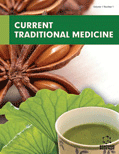Abstract
Intracerebral hemorrhage (ICH) is a devastating form of stroke associated with high morbidity and mortality. Numerous researches confirmed that the imbalance of iron homeostasis in perihematoma caused by haemoglobin-derived iron plays a major role in secondary brain damage, which is a key variable influencing the long-term prognosis following ICH. However, brain damage caused by iron is varied and complex, and its diagnosis and treatment have not yet formed a clear specification. This review summarizes and analyses the existing evidence on the imbalance of iron homeostasis and its mechanism of neurotoxicity, the expression of iron regulatory and transport proteins, current status of diagnosis and treatment, especially the intervention of Chinese Medicine. It comes to the conclusion that neurotoxicity of iron overload in ICH has become a subject of consensus. Iron regulatory and transport proteins play a key role in iron homeostasis, but some of the mechanisms are unclear, and there are no effective intervention measures. Chinese Medicine (CM) therapies including herbal medicine, acupuncture, and other non-medication therapies were confirmed effectively ameliorate iron homeostasis following ICH. However, the mechanism of its efficacy has not been fully elucidated. Therefore, further investigation including large sample and multicenter clinical trial and basic research are required.
Keywords: Intracerebral hemorrhage, iron homeostasis, brain injury, Chinese medicine.
Current Traditional Medicine
Title:Imbalance and Management of Iron Homeostasis and the Intervention of Chinese Medicine in Intracerebral Hemorrhage: A Review
Volume: 4 Issue: 2
Author(s): Jin-Song Zeng, Jin-Wen Ge*Jian-Bai Yu
Affiliation:
- College of Integrated Chinese and Western Medicine, Hunan University of Chinese Medicine, 410208, Changsha, Hunan,China
Keywords: Intracerebral hemorrhage, iron homeostasis, brain injury, Chinese medicine.
Abstract: Intracerebral hemorrhage (ICH) is a devastating form of stroke associated with high morbidity and mortality. Numerous researches confirmed that the imbalance of iron homeostasis in perihematoma caused by haemoglobin-derived iron plays a major role in secondary brain damage, which is a key variable influencing the long-term prognosis following ICH. However, brain damage caused by iron is varied and complex, and its diagnosis and treatment have not yet formed a clear specification. This review summarizes and analyses the existing evidence on the imbalance of iron homeostasis and its mechanism of neurotoxicity, the expression of iron regulatory and transport proteins, current status of diagnosis and treatment, especially the intervention of Chinese Medicine. It comes to the conclusion that neurotoxicity of iron overload in ICH has become a subject of consensus. Iron regulatory and transport proteins play a key role in iron homeostasis, but some of the mechanisms are unclear, and there are no effective intervention measures. Chinese Medicine (CM) therapies including herbal medicine, acupuncture, and other non-medication therapies were confirmed effectively ameliorate iron homeostasis following ICH. However, the mechanism of its efficacy has not been fully elucidated. Therefore, further investigation including large sample and multicenter clinical trial and basic research are required.
Export Options
About this article
Cite this article as:
Zeng Jin-Song , Ge Jin-Wen *, Yu Jian-Bai , Imbalance and Management of Iron Homeostasis and the Intervention of Chinese Medicine in Intracerebral Hemorrhage: A Review, Current Traditional Medicine 2018; 4 (2) . https://dx.doi.org/10.2174/2215083804666180604102722
| DOI https://dx.doi.org/10.2174/2215083804666180604102722 |
Print ISSN 2215-0838 |
| Publisher Name Bentham Science Publisher |
Online ISSN 2215-0846 |
 12
12 3
3 1
1 1
1
- Author Guidelines
- Bentham Author Support Services (BASS)
- Graphical Abstracts
- Fabricating and Stating False Information
- Research Misconduct
- Post Publication Discussions and Corrections
- Publishing Ethics and Rectitude
- Increase Visibility of Your Article
- Archiving Policies
- Peer Review Workflow
- Order Your Article Before Print
- Promote Your Article
- Manuscript Transfer Facility
- Editorial Policies
- Allegations from Whistleblowers
- Announcements
Related Articles
-
Antiviral Activity of Jodantipyrin – An Anti-Inflammatory Oral Therapeutic with Interferon-Inducing Properties
Anti-Inflammatory & Anti-Allergy Agents in Medicinal Chemistry Cannabinoid Drugs and Enhancement of Endocannabinoid Responses: Strategies for a Wide Array of Disease States
Current Molecular Medicine Modulation of Ischemic Brain Injury and Neuroinflammation by Adenosine A2A Receptors
Current Pharmaceutical Design COVID-19 and Autoimmune Diseases: A Systematic Review of Reported Cases
Current Rheumatology Reviews Mechanisms of Neurodegeration in Type 2 Diabetes and the Neuroprotective Potential of Dipeptidyl Peptidase 4 Inhibitors
Current Medicinal Chemistry Oxidative Stress Mediated Mitochondrial and Vascular Lesions as Markers in the Pathogenesis of Alzheimer Disease
Current Medicinal Chemistry Targeted Tumor Therapies at a Glance
Current Drug Targets Sirtuins Family- Recent Development as a Drug Target for Aging, Metabolism, and Age Related Diseases
Current Drug Targets PDE5 Inhibitors in Non-Urological Conditions
Current Pharmaceutical Design New Molecular Targets in the Treatment of NSCLC
Current Pharmaceutical Design New Insights into the Regulation of Liver Inflammation and Oxidative Stress
Mini-Reviews in Medicinal Chemistry Ginkgo biloba Extract in Vascular Protection: Molecular Mechanisms and Clinical Applications
Current Vascular Pharmacology Nano Traditional Chinese Medicine: Current Progresses and Future Challenges
Current Drug Targets Permeating the Blood Brain Barrier and Abrogating the Inflammation in Stroke: Implications for Stroke Therapy
Current Pharmaceutical Design Chronic Diseases and COVID-19: A Review
Endocrine, Metabolic & Immune Disorders - Drug Targets Gender-Specific Relationship Between Uric Acid Levels and Prognosis After Cerebral Venous Thrombosis
Current Neurovascular Research Early β-Amyloid-induced Synaptic Dysfunction Is Counteracted by Estrogen in Organotypic Hippocampal Cultures
Current Alzheimer Research The Role of Apoptotic Pathways in Alzheimers Disease Neurodegeneration and Cell Death
Current Alzheimer Research The Role of Pro-Inflammatory Molecules and Pharmacological Agents in Acute Pancreatitis and Sepsis
Inflammation & Allergy - Drug Targets (Discontinued) Leptin and Interleukin-1β Modulate Neuronal Glutamate Release and Protect Against Glucose-Oxygen-Serum Deprivation
Current Neurovascular Research


























